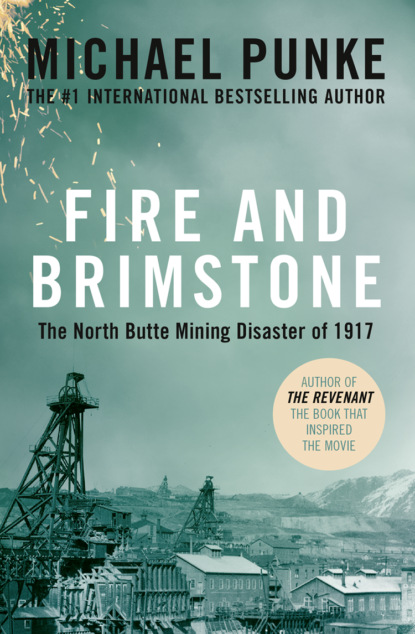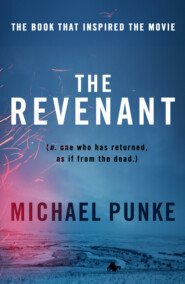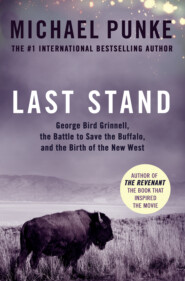По всем вопросам обращайтесь на: info@litportal.ru
(©) 2003-2025.
✖
Fire and Brimstone: The North Butte Mining Disaster of 1917
Настройки чтения
Размер шрифта
Высота строк
Поля
An investigation by the United States Senate would later reveal the depth and breadth of Clark’s bribery. For many legislators, the bribe was no more complicated than an envelope stuffed with cash. For others, bogus business deals were concocted to cover the tracks, including a number of land transactions in which Clark paid ridiculously inflated prices. One legislator struggled to explain how he had arrived at the legislative session penniless (indeed, borrowing $25 to make the trip) but returned home to pay $3,500 cash for a new ranch. Another claimed part of his $3,600 windfall as the profits of gambling; the rest, he said, he had “found in his hotel room.”
By one credible estimate, Clark paid around $431,000 for the purchase of forty-seven votes, a tidy sum in the currency of the day.
This scale of bribery, to the credit of a few solid Montanans, did not go unnoticed. Indeed, a remarkable drama played out over a month-long period in Helena, the state capital. Rumors of Clark’s bribery began even before the opening of the legislative session, and during the session, “the purchase of votes was talked about almost as freely as the weather.”
Mark Twain, who knew William Clark personally, said that “by his example he has so excused and so sweetened corruption that in Montana it no longer has an offensive smell.”
The smell, though, was offensive to some—or at least to a few. Rumors became so persistent that the Montana legislature formed a committee to investigate the corruption before the voting took place. The most dramatic testimony came from a former buffalo hunter, Senator Fred Whiteside. Whiteside reported that he had been offered a bribe by Clark agents, which he accepted in order to provide evidence. Dramatically, Whiteside presented $30,000 in cash to the investigating committee. “I know that the course I have pursued will not be popular, but so long as I live, I propose to fight the men who have placed the withering curse of bribery upon this state.” A grand jury was now convened to consider the findings.
William Clark, though, was far from finished. As balloting began for the Senate election and as the grand jury convened, Clark’s men flooded still more money into the streets—now including the grand jurors on their lists of targets. Clark’s network of Montana newspapers, meanwhile, blasted the Whiteside allegations as part of a vast conspiracy.
At the same time, Senator Whiteside himself became the target of a vicious counterassault. Whiteside’s recent election to the state senate had been challenged by his local opponent, and Clark’s forces seized upon the opening. A recount was demanded, and Clark’s forces succeeded in disqualifying ballots in which Whiteside voters had marked an “X” after his name—rather than before.
Clark’s audacious, shameless counterassault worked. The grand jury declined to find evidence of bribery. Senator Whiteside, meanwhile, was disqualified from the state congress. The old buffalo hunter, at least, did not go down quietly. On the day of his disqualification, Whiteside rose on the floor of the state senate and gave his former colleagues full bore. “If I failed to express myself at this time,” he said, “I feel that I would be false to myself, false to my home, and false to the friends that have stood so manfully by me.
“Let us clink glasses and drink to crime,” chided Whiteside. The Senate election, he said, “has reminded me of a horde of hungry, skinny, long-tailed rats around a big cheese.” Dozens of men would turn away their eyes and squirm uncomfortably in their seats as Whiteside delivered his final broadside. “I am not surprised that the gentlemen who have changed their votes to Clark recently should make speeches of explanation, but I would suggest that their explanations would be much more clear and to the point if they would just get up and tell us the price and sit down.”
Money, indeed, had trumped. The Montana legislature sent William A. Clark to the United States Senate, but the election saga was far from over.
Marcus Daly’s newspapers had made sure that the bribery scandal received wide play. Organized in part by Daly, anti-Clark forces took their fight to Washington. The U.S. Senate, under its own rules, can reject members for cause. On the day that William Clark took his seat in the Senate, two petitions were laid before the national body—one from Clark opponents in the Montana legislature and one from the governor of Montana. The petitions outlined the charges against Clark, and in a process familiar to modern political observers, the Senate launched an ethics investigation through the Committee on Privileges and Elections.
Clark watched as a parade of Montana state legislators gave sheepish explanations of the sudden turns in their economic fortunes. Senator Whiteside too told his story, and both Clark and Daly were called before the committee. (Daly, of course, was no angel. The committee, for the record, found ample wrongdoing on both sides.)
In the end, Republicans and Democrats voted unanimously “that the election to the Senate of William A. Clark, of Montana, is null and void on account of briberies, attempted briberies, and corrupt practices.” Faced with adoption of the committee recommendation by the full United States Senate, William Clark resigned on May 15, 1900.
Resignation, though, was not the same as quitting. Remarkably, Clark’s most outrageous maneuvers were still to come. His resignation created a vacancy that the governor of Montana would now be entitled to fill. The governor, Robert B. Smith, was a Daly ally and had aided the effort to overturn Clark’s election. Smith’s lieutenant governor, however, a man named A. E. Spriggs, was a close ally of Clark’s.
Clark allies arranged an elaborate scheme to lure Governor Smith out of the state. In his absence, Lieutenant Governor Spriggs—now Acting Governor Spriggs—appointed William Clark to the vacant Senate seat! Learning of this outrage, Governor Smith rushed back to Montana, declared Spriggs’s action invalid, and appointed his own man to the Senate. Each side protested the action of the other, and both candidates were tossed to Washington for the United States Senate to sort out.
Perhaps fatigued with the shenanigans, the Senate never resolved the matter of Montana’s rightful representation. The issue would die without any man taking the office. Montana citizens, having labored to earn the cherished right of statehood only a decade earlier, would have only one senator in Washington for the balance of the term.
The election scandal of 1899, viewed from the distance of a full century, might be amusing if not for the legacy it spawned. Through a decade-long struggle founded on ego and personal aggrandizement, the Copper Kings had done much to “define deviancy down.”
In the process, Montana picked up habits that would stick with the state for decades, including crude manipulation of the press, naked political corruption, and domination of state government by the copper industry.
In a few years, powerful interests from outside the state would use these same tools in ways as yet unimagined. Indeed, in one sense, the War of the Copper Kings can be viewed as a “noisy diversion.”
For while Clark and Daly roiled the waters on the surface, a great shark circled below.
Six (#ulink_0364677f-cc30-5a62-83f1-459cb57e3f7f)
“HELMET MEN BRAVING DEATH” (#ulink_0364677f-cc30-5a62-83f1-459cb57e3f7f)
Helmet Men Braving Death Each Minute
—HEADLINE, BUTTE DAILY POST, JUNE 9, 1917
Cornelius “Con” O’Neill was lying in bed when he heard the Speculator whistle blow the alarm, just after midnight on June 9, 1917. O’Neill was foreman of the Bell and Diamond mines, Anaconda-owned properties adjoining the Speculator to the south. Married and a father of four young children, the thirty-seven-year-old lived with his family in a gracious house (owned by Anaconda) barely a stone’s throw from the mines.
O’Neill’s wife, Julia, sensing the seriousness of the emerging disaster, pleaded with him to stay home. Instead, the “big, robust Irishman” rushed to the Bell-Diamond.
O’Neill arrived while the fire was still in its early minutes, probably around 12:30 A.M. He found himself in the midst of a chaotic and confusing scene. What was obvious, though, was that the Granite Mountain shaft was ablaze. The “flaming torch” at its collar stood only a few hundred feet up the hill. Foreman O’Neill instantly recognized the danger to his own men in the depths of the Diamond. Of particular concern were thirty miners at work on the 1,800-foot level, where there was a direct connection to the Speculator.
O’Neill directed his men to gather the makings for a bulkhead to “keep the smoke and gas from our men.” Quickly they loaded canvas and other materials onto the cage. Two other men accompanied Con O’Neill into the Diamond shaft—Ed Lorry and “Con” Toomey (O’Neill was sometimes known as “Big Con” to distinguish him from the multitude of “Cons” among the heavily Irish miners). None of the men wore any type of breathing apparatus, but when they reached the 1,800 Station of the Diamond, the air initially was clear. They progressed some 150 feet toward the Speculator and began to make preparations to build a canvas bulkhead.
When the gas came, it hit hard and fast. Lorry suddenly collapsed. O’Neill and Toomey attempted to carry the stricken man back to the 1,800 Station, but then O’Neill too went down. Though they were close to the station, only Toomey managed to crawl back. By the time he got there, rescuers in breathing apparatus had already descended to search for the three men, worried by the length of time they’d been gone.
“To hell with me—I can make it,” Toomey told the rescuers. “O’Neill and Lorry are in there.” The rescuers hurried down the drift, finding O’Neill and Lorry unconscious. One of the rescuers described the scene. “The smoke and gas were so thick in the 1,800 of the Diamond that we could not see three feet in front of us. No man could live in that gas without a helmet for ten seconds.” He was right. The rescuers managed to pull O’Neill and Lorry to the surface, but it was too late.
The death of Con O’Neill, “the best known of the men who lost their lives in the disaster,” contributed to the shock on that first day after the fire. His photo in the newspaper, showing a powerful man with a thick mustache and thicker neck, underscored the vulnerability of all the men. The Butte papers lauded O’Neill in the gushing tone of a less cynical age: “[H]is efforts to save his companion,” wrote the Butte Daily Post, “even when he knew his own life was in danger, were characteristic of the man.”
Like the effort by Con O’Neill, other early rescue attempts were largely spontaneous, more a function of impulse than contingency plans. The main body of trained rescuers would not arrive at the mines until after dawn.
Instead of waiting, early rescuers simply dived in. Some, like Con, took their chances without the breathing equipment that would ultimately play a vital role in rescue efforts.
By the early twentieth century, breathing equipment was widely used by both mine rescuers and firemen. In the trenches of Europe, the apparatus was also used in connection with the “recent introduction of asphyxiating gases for offensive military purposes.” Specifically, the helmets were worn by soldiers “setting off the gas.”
Rescuers at Butte used two main types of breathing apparatus: the German-made “Draeger” and English-made “Fluess.” Both the Draeger and the Fluess looked similar to deep-sea diving equipment, complete with breathing helmets. It was the helmets that gave the mine rescuers their popular name—the “helmet men.” In addition to the helmet (or in some models, a skullcap with goggles and mouthpiece), the apparatus consisted of compressed oxygen tanks that were worn on the back and a rubber “breathing bag” that was worn on the chest. Inside the breathing bag was alkali to absorb the carbon dioxide exhaled by the user. Various tubes and valves connected the components. Altogether, the helmet men’s breathing equipment tipped the scales at a hefty forty pounds. It was hot and cumbersome, particularly in the sweltering depths of the mines.
The breathing apparatus of the day was also notoriously unreliable. Indeed, a 1917 report on breathing equipment by the U.S. Bureau of Mines concluded that its use in any circumstances “involves grave danger.” Citing the many deaths of rescuers wearing the equipment, the report called for a fundamental redesign. The authors noted that helmets were prone to leaking, subjecting the wearers to gas.
The 1917 equipment was also incapable of increasing the amount of oxygen made available to users during strenuous activity. Obviously, rescuers frequently faced situations demanding heightened activity. The report used the specific example of rescuers carrying injured men to safety, “an exertion of which men hampered with helmets are practically incapable.”
Helmet men who overexerted themselves frequently passed out—and sometimes died.
Despite its limitations, the breathing apparatus was all that Butte’s rescuers had. In eight days of rescue and recovery work, an estimated 175 men used the breathing apparatus to make more than 2,000 descents into the burning mines.
Remarkably, though many were injured, none died.
The first rescue effort with breathing apparatus occurred barely an hour after the fire started. Sometime before 1:00 A.M., two men, named Harry Goodell and William Burns, entered the mine, using the Speculator shaft to access the 700 Station.
They recovered two bodies, carrying them to the surface at 1:30 A.M.
The name of the first identified victim was Bill Ramsey, a mucker who worked on the 700 level of the Spec.
Muckers occupied a position near the bottom rung of the mining ladder, their job to “muck up” the ore that more skilled workers had dynamited from the walls. Ramsey had been busy shoveling rock when smoke from Granite Mountain began to fill the drift.
Panic broke out, with many men on the 700 scrambling to climb up a manway to the 600 level even as men on the 600 tried to climb down. One of Ramsey’s fellow miners, John “Shorty” Thomas, urged him to climb up to the 600, telling him that there was no escape at the 700 level. But Ramsey refused. Apparently there was a brief argument about which way to go. Later Thomas, safe above ground, would report Bill Ramsey’s last words: “I’m a stayin’ fool.”
It wasn’t until 2:15 A.M. on June 9, when North Butte officials first realized how few men had escaped through adjoining mines, that the organized rescue effort began to take full shape. The officials gave immediate notice to the coroner and the hospitals. The coroner, Aeneas Lane, called the undertakers. Within twenty minutes, a small fleet of ambulances and “undertakers wagons” stood waiting inside the mine yard.
They would be busy throughout the long night.
Two lowly timekeepers, Grover McDonald and Thomas O’Keefe, emerged as key players in the early efforts to respond to the disaster. Their prime asset was a knowledge of the names and faces in the mines, and to them fell the task of keeping a tally of who was dead, alive, or missing. An urgent call went out, ultimately picked up by the newspapers, for North Butte miners to report in.
Many men who had emerged safely from the fiery mines hurried home so that loved ones would know they were alive. The Anaconda Standard painted a telling portrait of a group of miners brought up through the Badger. They “took one look around the mine, glanced toward the Speculator and then started at a brisk walk for town.” Once on the street, a few threw their lunch buckets in the ditch. “I’m through with mining from this time on,” declared one man. “I will never go into the hole again.”
The call for rescuers extended, of course, to all available helmet men. The federal government provided one source of trained men and equipment. Daniel Harrington, a Butte representative of the Bureau of Mines, sent telegraphs requesting the dispatch of two specially equipped mine rescue cars. Though much ballyhooed by Harrington, who would ultimately author the official Bureau of Mines report on the accident, the cars did not play a vital role in the rescue effort. The nearest of the two was located in Red Lodge, Montana—250 miles away. The second was in Colorado. By the time both cars reached Butte, the mission had shifted from the rescue of the living to the recovery of the dead.







